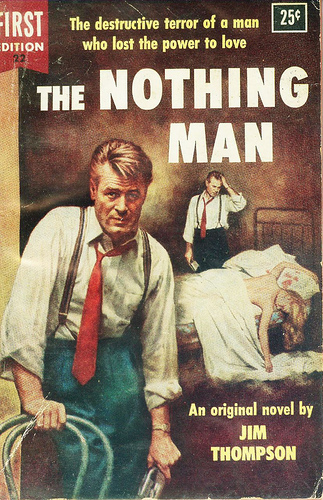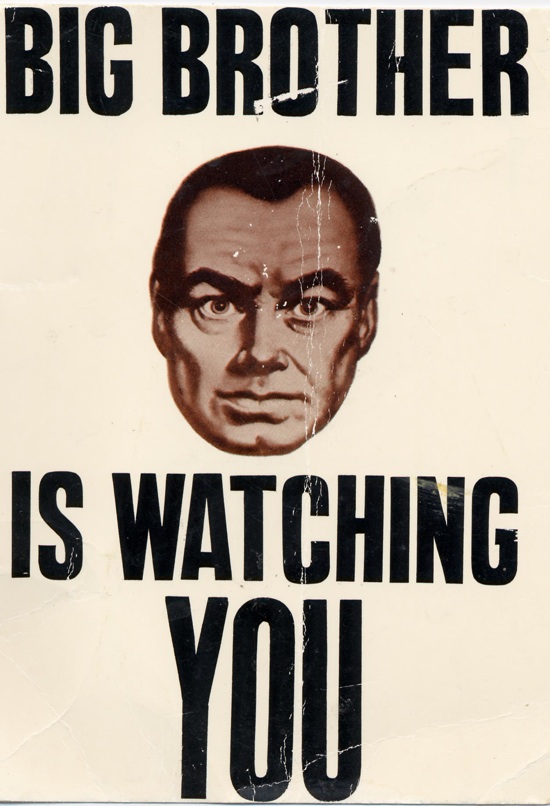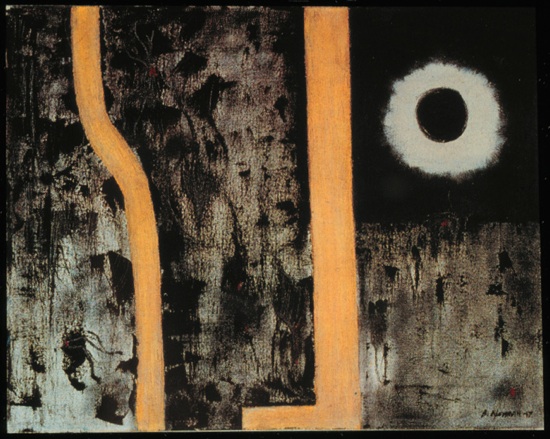Partisan Middlebrow
By:
September 10, 2009

High-, low-, no-, and hilobrow members of the Partisan Generation include: Albert Camus, Claude Lévi-Strauss, Clement Greenberg (whose 1939 Partisan Review essay, “Avant-Garde and Kitsch,” and 1953 Commentary essay, “The Plight of Our Culture,” are important anti-middlebrow treatises), Cornell Woolrich, Dwight Macdonald (whose 1960 Partisan Review essay, “Masscult and Midcult,” and various New Yorker essays from 1952-62, among others, are important anti-middlebrow treatises), Emmanuel Levinas, Ernie Bushmiller, Fats Waller, Flann O’Brien, George Orwell (whose 1936 essay “Bookshop Memories” and 1945 essay “Good Bad Books,” among others, are anti-middlebrow), Hannah Arendt (who conflated totalitarianism and the homogenizing effects of mass media when warning about threats to a public sphere of liberal discourse and critical judgment), Hergé, Isaiah Berlin (who complains of middlebrows in a 1936 letter), Jackson Pollock (whose abstract expressionism the arch-middlebrow Norman Rockwell parodied savagely), Jacques Tati, Jacques-Yves Cousteau, Jean-Paul Sartre, Julio Cortazar, Lawrence Durrell, Marguerite Duras, Marshall McLuhan (a critic of middlebrow magazines like Time and Life), Mary McCarthy (who, like her friends Macdonald, Arendt, and Greenberg, was savagely anti-middlebrow; and she was married to a key anti-middlebrow critic of an older generation, Edmund Wilson), Maurice Blanchot, Mervyn Peake, Northrop Frye, Paul Bowles, Paul Goodman, Paul Ricoeur, Phil Silvers, Rachel Carson, Robert E. Howard, Robert Johnson, Roberto Rossellini, Samuel Beckett, Simone de Beauvoir, Simone Weil, T.W. Adorno (as noted, a key anti-middlebrow critic), Walt Kelly, Willem de Kooning, and Woody Guthrie.
This item is excerpted from yesterday’s essay on the Partisan Generation.

In addition to anti-Stalinist leftism, high-, low-, no-, and hilobrow Partisans were entirely responsible for EXISTENTIALISM (the postwar existentialist philosophers and psychologists — Camus, Sartre, Beauvoir, Merleau-Ponty, Viktor Frankl, Rollo May — as well as supposedly existentialist writers and filmmakers like Genet, Beckett, Ionesco, Cioran, Antonioni, Kurosawa, Adamov, were all born from 1904-13); NOIR FICTION (except for David Goodis, the important noir authors — Jim Thompson, Dorothy B. Hughes, Charles Williams — were born from 1904-13; honorary Partisan Cornell Woolrich was born in ’03); and ABSTRACT EXPRESSIONISM (Arshile Gorky, Philip Guston, Franz Kline, Willem de Kooning, Lee Krasner, Barnett Newman, Jackson Pollock, David Smith, and Clyfford Still were born from 1904-13; honorary Partisan Mark Rothko was born in ’03).
After reading the above paragraph, who can still argue that the tightly knit 1904-13 cohort ought to be lumped into some amorphous, sprawling pseudo-generation like the GI/Greatests? I ask you.
Interesting to think of the Existentialists as the immediate juniors of the Hardboileds. As noted, the Hardboileds accepted the truth of the Modernists’ claim that unfreedom had been relocated inside our own heads; this, in fact, is what it means to be a modern. The Hardboileds were fatalistic, pessimistic, and bitterly resigned to unfreedom. The Existentialists accept unfreedom, but put an optimistic spin on it: we can be free within unfreedom, they claim. Sartre insisted that we must accept responsibility for our “thrownness” into a situation that we didn’t choose; we’re free if we choose our unfreedom. Camus, who self-consciously aped the style of hardboiled crime novelists, asked us to imagine that Sisyphus, perhaps the least free figure in western mythology, and the one most aware of the absurdity (unmeaningfulness) of life, was happy. No wonder Middlebrow is so comfortable with the so-called GI/Greatest Generation.
Note that I distinguished between hardboiled literature and noir in an earlier post. I wrote: Noir fiction, in which the protagonist is usually not a detective, but instead a victim, a suspect, or a perpetrator, and in which sex plays a prominent role, was pioneered by Cornell Woolrich. The titles of Woolrich’s novels — e.g., The Bride Wore Black (1940), The Black Curtain (1941), Black Alibi (1942), The Black Angel (1943), The Black Path of Fear (1944) — inspired French critics to call movies based on them “noir.”
Partisans are also entirely responsible for the first wave of GOLDEN-AGE SCIENCE FICTION and FANTASY, which, if you ask me, is a middlebrow version of what I’ve named Radium Age SF (published 1904-33). Born from 1904-13: Robert A. Heinlein (Stranger in a Strange Land, Starship Troopers), Fritz Leiber (The Wanderer, Fafhrd and the Gray Mouser series), L. Sprague de Camp (continued Conan series), L. Ron Hubbard (Battlefield Earth, invented Scientology), Lester Dent (Doc Savage series), Fredric Brown (SF stories), Jack Finney (The Body Snatchers), Nelson S. Bond (SF stories), Ross Rocklynne (SF stories), Clifford D. Simak (Way Station, City), C.L. Moore (SF stories; one of the first women SF writers), A.E. van Vogt (Slan, The World of Null-A), A. Bertram Chandler (Rim World series), Edgar Pangborn (A Mirror for Observers), and Eric Frank Russell (Sinister Barrier). Four other Partisans started as Radium Age SF writers: John W. Campbell Jr. (The Black Star Passes; as editor of Astounding Science Fiction, single-handedly ushered in the so-called Golden Age of SF); Jack Williamson (The Legion of Space series; after Heinlein, the “Dean of Science Fiction”); Eando Binder (Earl Andrew Binder & Otto Oscar Binder, known for their SF stories; Otto later wrote nearly 1,000 Captain Marvel stories); and Robert E. Howard (Conan series).

Honorary Partisans George Orwell (1984) and John Beynon Harris (John Wyndham: The Day of the Triffids, The Midwich Cuckoos) made important contributions to SF, as did the following Partisans not known primarily as SF writers: Ayn Rand (Atlas Shrugged, Anthem), Samuel Beckett (Endgame), Pierre Boulle (Planet of the Apes), Hergé (The Shooting Star), Louis L’Amour (The Haunted Mesa), and B.F. Skinner (Walden Two). Al Capp wrote “The Time Capsule,” a genuine SF adventure starring Li’l Abner, which appeared in Satellite (August 1957); and without Partisans Joseph Campbell, Alex Raymond (Flash Gordon), and Buster Crabbe, we’d have no Star Wars. Alfred Bester is an honorary member of the New Gods; Edmond Hamilton is an honorary Hardboiled.
All of the above topics are fascinating. But I will restrict myself, in this limited space, to the following notes on Abstract Expressionism and BIG BAND SWING (Glenn Miller, Jimmy Dorsey, Chick Webb, Tommy Dorsey, Jack Teagarden, Benny Goodman, Gene Krupa, Shep Fields, Artie Shaw, Bob Crosby, Woody Herman, were all born from 1904-13).

Writing under the anti-middlebrow pseudonym “Hektor Rottweiler,” honorary Partisan T.W. Adorno rejected the claim that jazz of this (or any) sort was a musical form whose spontaneity and primitivism expressed liberation. Jazz, he scoffed, combines “the lament of unfreedom” (the music’s pseudo-spontaneous elements, e.g., moments when a a soloist takes center stage, and improvises a solo) with unfreedom’s “oppressed confirmation” (the music’s unchallenged rhythm, the steady pounding of the drum). Like Middlebrow itself, Big Band Swing dialectically transforms contrariness into smoothness; instead of revolutionary energy, Adorno found in the music only the “half-resentful, half-compliant” submission to slavery that (he wrote) characterizes the blues from which it sprung. In its very form, according to Adorno, Big Band Swing reflects a social order (one diagnosed by the Modernists and Hardboileds) in which coercion has been relocated within spontaneity, authority within liberty. (Discuss.)

Influenced by the anti-middlebrow art movements Surrealism (e.g., the automatic art of Pollock, De Kooning, Hofmann) and Cubism (e.g., the simple, unified blocks of color of Newman, Still, Rothko), Abstract Expressionism might seem to be a redoubt of anti-middlebrow cultural production during an era in which Middlebrow triumphed in the west. The anti-middlebrow art critic Clement Greenberg, who regarded Abstract Expressionism as highbrow art, argued persuasively that this was the case. However, the impression of intellectual, aesthetic, and perhaps most importantly, political freedom evoked by Pollock’s psychologically intense action paintings, Rothko’s spiritually overwhelming multiforms, and Smith’s witty connect-the-dot sculptures, for example, were easily coopted by CIA-funded propagandists in order to reassure Americans that we — unlike the recently defeated Nazis, and particularly the ever-more powerful Communists — were on the right side of history. The question is: Were those propagandists high-middlebrow? highbrow? Or anti-lowbrow? (Discuss.)
